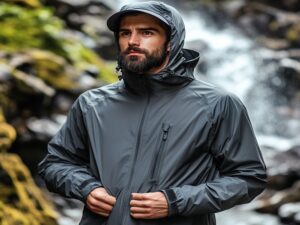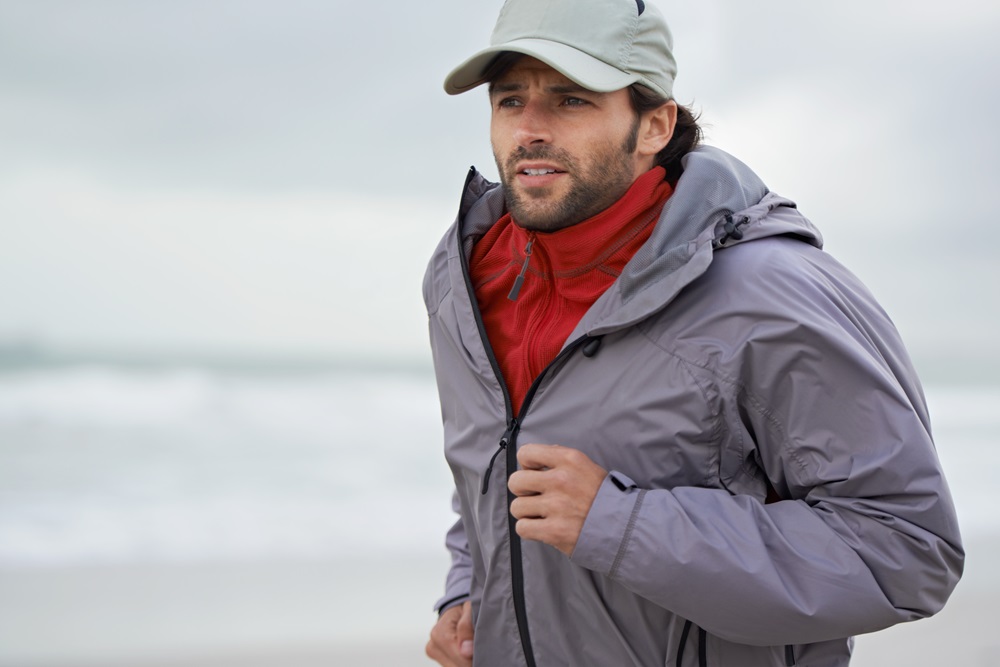Getting caught in the rain unprepared can ruin your outdoor plans fast. I learned this lesson while hiking last spring with just a north face rain jacket men model that I thought would keep me completely comfortable.
What I didn’t realize was that proper layering underneath is just as important as the rain protection itself.
The right combination keeps you dry from both rain and sweat while maintaining your body temperature in any weather.
Why Proper Layering Matters Under Rain Protection
Your rain jacket forms a barrier against outside moisture, but without the right layers underneath, you might end up just as wet from your own sweat. This happens because most waterproof materials don’t breathe well enough on their own.
The goal of smart layering is managing moisture from both outside and inside while maintaining your ideal body temperature. Studies show that maintaining your core temperature improves comfort, performance, and safety during outdoor activities.
The Basic Layering System Explained
Before diving into temperature-specific recommendations, let’s understand the three main layers that work together:
- Base layer – Sits against your skin to wick away sweat
- Mid layer – Provides insulation to keep warmth in
- Outer layer – Your rain jacket that blocks wind and rain
How you adjust these layers for different temperatures makes all the difference in your comfort.
Temperature-Based Layering Guide
The table below shows exactly what to wear under your rain jacket across different temperature ranges:
| Temperature Range | Base Layer | Mid Layer | Special Considerations |
| Hot (70°F+/21°C+) | Lightweight, quick-dry t-shirt | None needed | Choose a highly ventilated rain jacket |
| Warm (55-70°F/13-21°C) | Light long sleeve wicking shirt | Very light fleece or none | Open pit zips when active |
| Cool (40-55°F/4-13°C) | Medium weight long sleeve | Light to medium fleece or wool | Keep zips closed when stationary |
| Cold (25-40°F/-4-4°C) | Heavy base layer/thermal | Heavy fleece or light down | Add neck gaiter or hat |
| Very Cold (Below 25°F/-4°C) | Heavy thermal base + liner gloves | Down jacket or heavy wool | Consider shell with more room for layers |
Hot Weather Layering (70°F+/21°C+)
In hot weather, less is more. Your main enemy isn’t cold but overheating and sweat buildup.
Wear a lightweight, breathable shirt under your rain jacket. Materials like polyester or special workout fabrics pull sweat away from your skin. Cotton is your worst enemy in rain gear layering—it soaks up moisture and stays wet, making you feel clammy and cold even in warm weather.
Make sure your rain jacket has good ventilation options like pit zips or mesh-lined pockets that you can open. Sometimes in very hot rain, you might be more comfortable getting slightly wet than wearing the jacket at all.
Warm Weather Layering (55-70°F/13-21°C)
This temperature range is tricky because your activity level makes a huge difference. A light hike in 60°F (15°C) rain requires different layers than standing still watching a soccer game in the same conditions.
Start with a light long-sleeve base layer that wicks moisture. If you’ll be mostly active, this might be all you need under your rain jacket. If you’ll have periods of standing still, add a very thin fleece or soft shell that you can remove when moving.
Remember: It’s better to start slightly cool and warm up as you move than to overheat and soak your layers with sweat.
Cool Weather Layering (40-55°F/4-13°C)
Now we’re getting into temperatures where improper layering can lead to real discomfort. The key is adjustability as your activity level changes.
Your base layer should be a medium-weight long sleeve shirt. On top of that, add a light to medium fleece jacket or wool sweater. When inactive, keep your rain jacket fully zipped. When hiking or moving vigorously, unzip to vent heat before you start sweating heavily.
One pro tip: pack an extra mid-layer in your bag. If your first one gets damp from sweat or light rain penetration, having a dry replacement makes a huge difference in comfort.
Cold Weather Layering (25-40°F/-4-4°C)
Cold rain (or rain that might turn to snow) requires serious attention to layering. You need more insulation, but still need to manage sweat during activity.
Start with a heavyweight base layer—thermal underwear works great. Add a substantial mid-layer like a heavy fleece jacket or a lightweight down jacket. Your rain shell needs to be roomy enough to fit over these without compressing them (compression reduces insulation effectiveness).
Don’t forget your extremities. In cold rain, wet hands and head lose heat quickly. A waterproof hat or hood and waterproof gloves make a massive difference in overall comfort.

Very Cold Weather Layering (Below 25°F/-4°C)
At these temperatures, precipitation is often snow rather than rain, but mixed conditions do occur. Layering becomes critical for both comfort and safety.
Use a heavy base layer plus a serious insulating mid-layer like a puffy down jacket or thick wool. Make sure your rain shell is sized to accommodate these thicker layers without restricting movement.
Adding accessories like a neck gaiter, insulated hat, and waterproof insulated gloves becomes mandatory, not optional. About 30% of your body heat can be lost through your head when the rest of you is covered.
Final Tips for Any Temperature
Always test your movement after layering up. You should be able to raise your arms and bend without restriction.
Bring one more layer than you think you’ll need—weather changes quickly in many environments.
Pack layers in waterproof bags inside your backpack so you have dry options if conditions change.
The right layering system under your North Face rain jacket or any quality rain protection makes all the difference between a miserable experience and an enjoyable outdoor adventure regardless of the weather.
With these guidelines, you can stay comfortable in rain across virtually any temperature range you might encounter.


